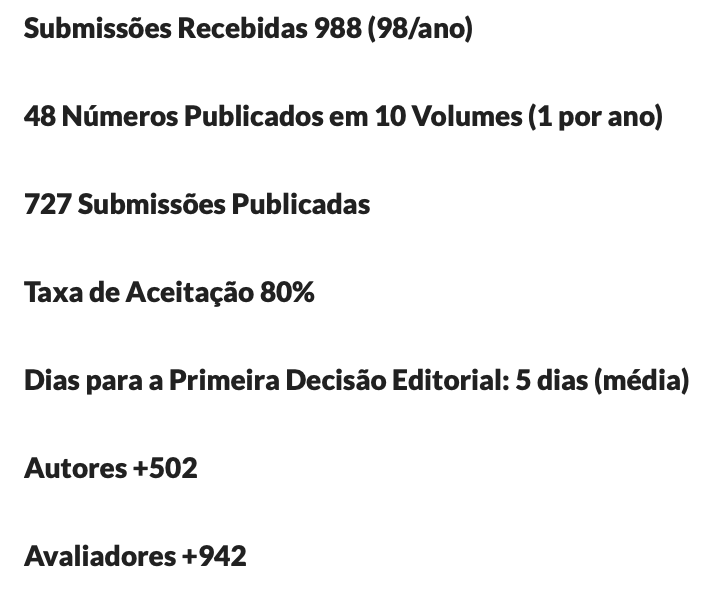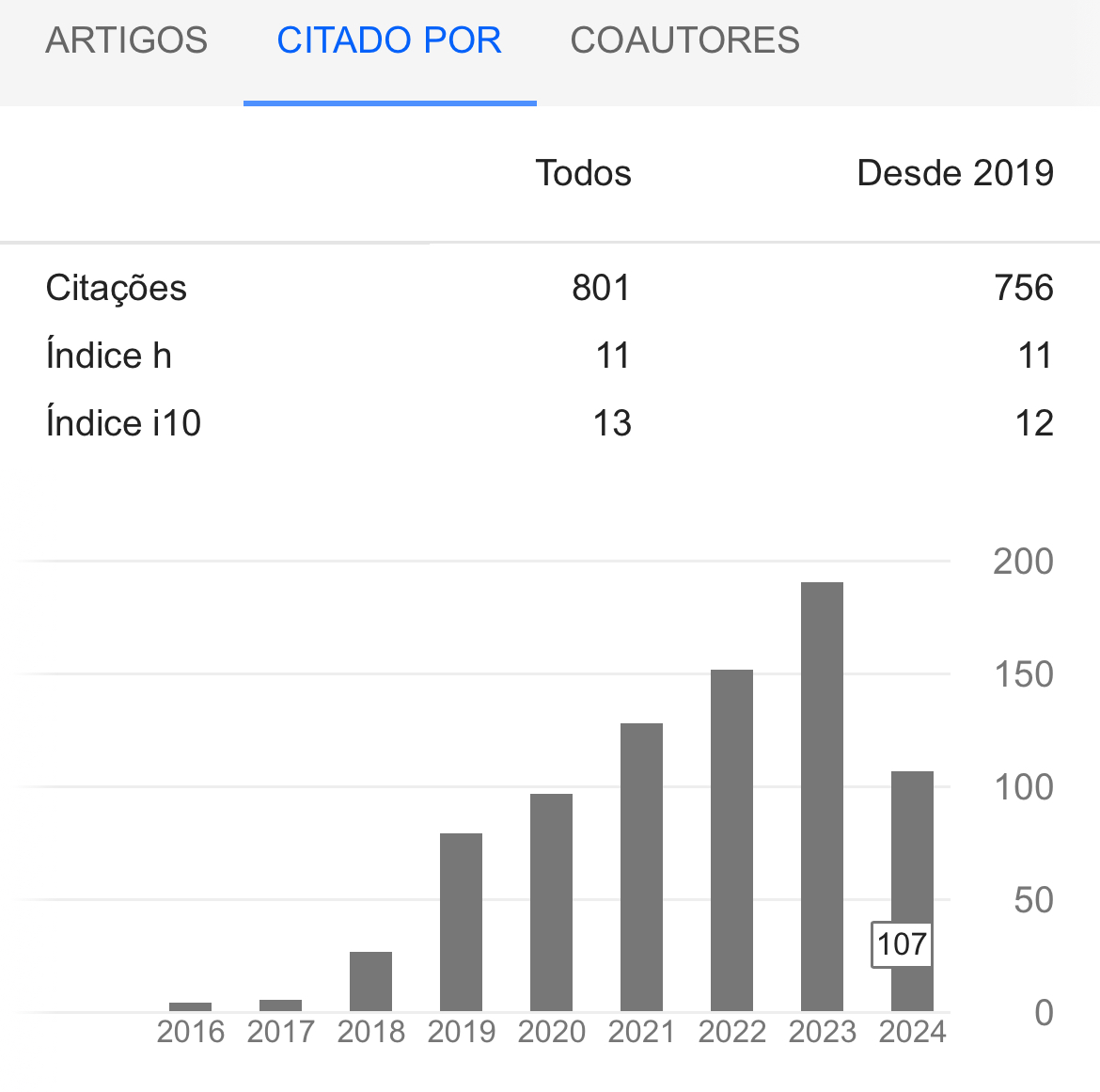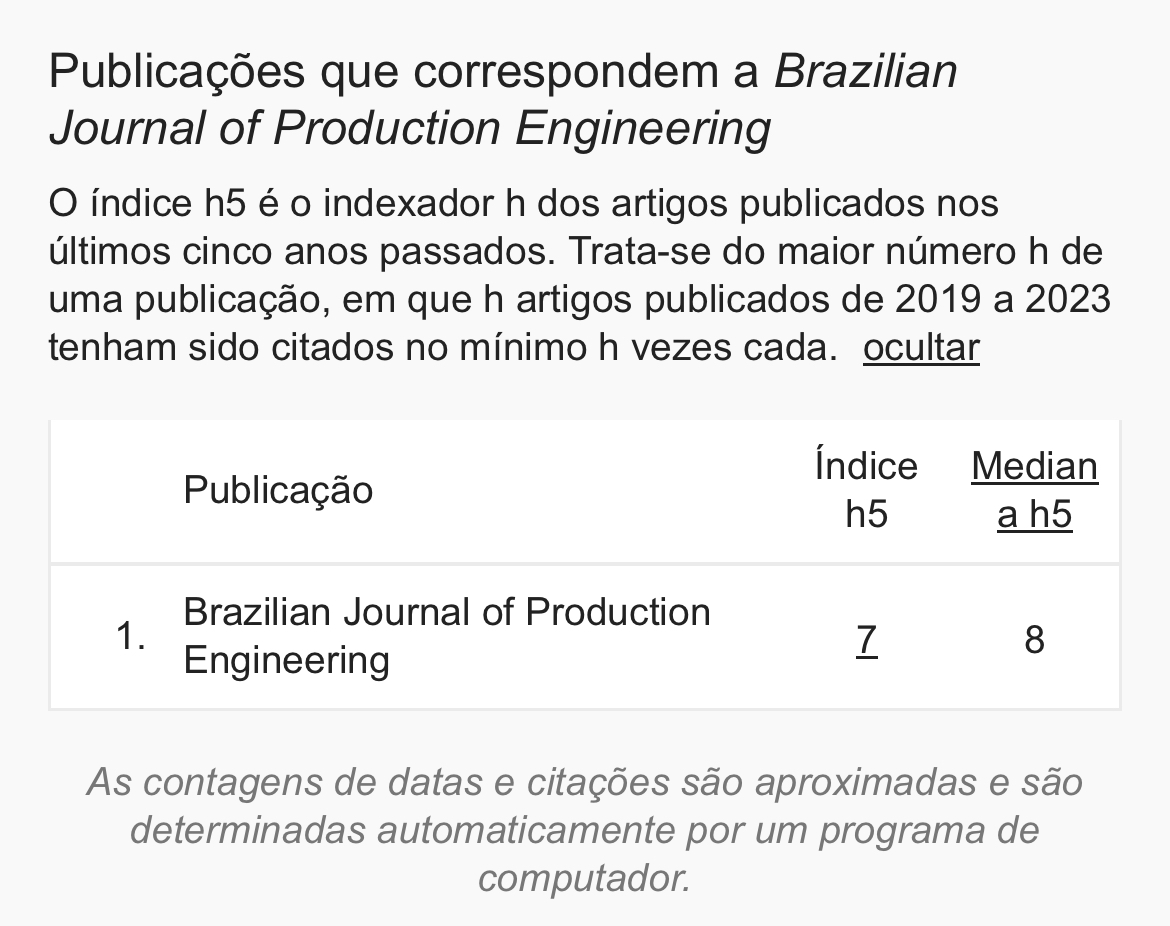Análise do desempenho energético e exegético de acordo com a temperatura de evaporação de um chiller de compressão de vapor
DOI:
https://doi.org/10.47456/bjpe.v10i3.44651Keywords:
Chiller de compressão de parafuso, Eficiência energética, Eficiência exergética, Temperatura de evaporaçãoAbstract
Este artigo apresenta uma análise de eficiência energética e exergética de um sistema de refrigeração de água gelada de grande porte, um chiller, integrado a uma central de água gelada projetada para suprir a carga térmica necessária para a refrigeração do ar de um grande shopping localizado na capital do estado da Paraíba, Brasil. O chiller estudado utiliza um compressor do tipo parafuso, que opera com um motor elétrico para aumentar a pressão em uma fase do ciclo termodinâmico, resultando em um consumo significativo de energia, especialmente em operações contínuas e sob carga elevada. O estudo se concentra na redução do consumo de energia elétrica ao avaliar e identificar melhorias na operação do sistema, com base no comportamento energético e exergético. Para alcançar esse objetivo, foram realizadas simulações numéricas utilizando o software Engineering Equation Solver (EES), que permitiram representar e otimizar o funcionamento do sistema. Além disso, o artigo apresenta dados detalhados do ciclo de refrigeração do chiller em estudo, essenciais para compreender o funcionamento do equipamento. Os resultados indicam que o evaporador teve a maior perda de exergia, porém reduzível ao aumentar a temperatura de evaporação, melhorando a eficiência global da unidade de refrigeração e reduzindo o consumo de energia elétrica.
Downloads
References
Afram, A. & Janabi-Sharifi, F. (2014). Theory and applications of HVAC control systems – A review of model predictive control (MPC). Building and Environment, 72, 343-355. https://doi.org/10.1016/j.buildenv.2013.11.016 DOI: https://doi.org/10.1016/j.buildenv.2013.11.016
Al-Qazzaz, A. H. S., Farzaneh-Gord, M., & Niazmand, H. (2024). Energy and exergy analysis with environment benefit of the underground cooling system of the chiller plant. Results in Engineering, 22, 101952. https://doi.org/10.1016/j.rineng.2024.101952 DOI: https://doi.org/10.1016/j.rineng.2024.101952
Carrier. (2008, julho). Manual de instalação, operação e manutenção Chiller EVERGREEN 23XRV. Recuperado de http://www.carrierdobrasil.com.br/modelo/downloads/meu-negocio/32/aquaedge-23xrv
Cavalcante, A. M. C. C., & Moreira, H. L. (2016). Análise exergética comparativa entre duas unidades de refrigeração por compressão de vapor de um shopping center localizado em Teresina-PI. Artigo publicado no CONEM. https://doi.org/10.20906/CPS%2FCON-2016-0930
CEEETA, Centro de Estudos em Economia da Energia, dos Transportes e do Ambiente. (2001, dezembro). Tecnologias de micro-geração e sistemas periféricos. Parte II – Tecnologias de aproveitamento de calor.
Çengel, Y. A., & Boles , M. A. (2013). Termodinâmica (8ª ed.). Porto Alegre: McGraw-Hill Education.
Chumioque, J. J. R. (2004). Simulação de um sistema de refrigeração com termoacumulação operando em regime transiente (Dissertação de mestrado). Pontifícia Universidade Católica do Rio de Janeiro, Departamento de Engenharia Mecânica.
Deymi-Dashtebayaz, M., Farahnak, M., Nazeri Boori Abadi, R., (2019). Energy saving and environmental impact of optimizing the number of condenser fans in centrifugal chillers under partial load operation. International Journal of Refrigeration, 103, 163-179. https://doi.org/10.1016/j.ijrefrig.2019.03.020
Economidou, M., Todeschi, V., Bertoldi, P., D’Agostino, D., Zangheri, P., & Castellazzi, L. (2020). Review of 50 years of EU energy efficiency policies for buildings. Energy and Buildings, 225. https://doi.org/10.1016/j.enbuild.2020.110322 DOI: https://doi.org/10.1016/j.enbuild.2020.110322
EPE, Empresa de Pesquisa Energética. (2023). Atlas da Eficiência Energética Brasil 2023. Recuperado de https://www.epe.gov.br/sites-pt/publicacoes-dados-abertos/publicacoes/PublicacoesArquivos/publicacao-788/Atlas%20da%20Efici%C3%AAncia%20Energ%C3%A9tica%20Brasil%202023.pdf
Ismail, M. & Hamdy, H. (2024). Influence of coupling air conditioner with hybrid PCMs on building interior conditions and consumed power: Experimental investigation. Energy and Buildings, 310, 114112.
https://doi.org/10.1016/j.enbuild.2024.114112 DOI: https://doi.org/10.1016/j.enbuild.2024.114112
International Energy Agency (IEA). (2018). The Future of Cooling: Opportunities for energy-efficient air conditioning. IEA Publications. Website:https://www.iea.org/reports/the-future-of-cooling
Iqbal, M. T., Tariq, A., Anis, A., & Ahn, J. (2022). Comparative exergoeconomic and exergoenvironmental analyses of two air conditioning systems using R32 and R410A refrigerants. Energy Conversion and Management, 255, 114415. https://doi.org/10.1016/j.enconman.2022.114415
Jiang, S., Wang, S. G., & Jin, X. (2018). Numerical research on coupling performance of inter-stage parameters for two-stage compression system with injection. Applied Thermal Engineering. https://doi.org/10.1016/j.applthermaleng.2017.09.126 DOI: https://doi.org/10.1016/j.applthermaleng.2017.09.126
Li, X., Zhang, Y., Zhang, X., & Wang, R. (2020). Exergy analysis and optimization of a CO2 transcritical refrigeration system with parallel compression and ejector expansion. Energy, 210, 118545. https://doi.org/10.1016/j.energy.2020.118545 DOI: https://doi.org/10.1016/j.energy.2020.118545
Lombard, L. P., Ortiz, J., & Maestre, I. R. (2011). The map of energy flow in HVAC systems. Applied Energy, 88(12), 5024-5031
https://doi.org/10.1016/j.apenergy.2011.07.003 DOI: https://doi.org/10.1016/j.apenergy.2011.07.003
Lyu, W., Wang, Z., Li, X., Xin, X., Chen, S., Yang, Y., Xu, Z., Yang, Q., Li, H. (2022). Energy efficiency and economic analysis of utilizing magnetic bearing chillers for the cooling of data centers. Journal of Building Engineering, 48, 103920. https://doi.org/10.1016/j.jobe.2021.103920 DOI: https://doi.org/10.1016/j.jobe.2021.103920
Mahdi, D.-D., Mehdi, F., & Reza, N. B. A. (2019). Energy saving and environmental impact of optimizing the number of condenser fans in centrifugal chillers under partial load operation. International Journal of Refrigeration, 103, 163-179. https://doi.org/10.1016/j.ijrefrig.2019.03.020 DOI: https://doi.org/10.1016/j.ijrefrig.2019.03.020
Massuchetto, L.H.P., do Nascimento, R.B.C., de Carvalho, S.M.R., de Araujo, H.V. (2019). Thermodynamic performance evaluation of a cascade refrigeration system with mixed refrigerants: R744/R1270, R744/R717, and R744/RE170. International Journal of Refrigeration, 106, 201-212. https://doi.org/10.1016/j.ijrefrig.2019.07.005 DOI: https://doi.org/10.1016/j.ijrefrig.2019.07.005
Moran, M. J., Shapiro, H. N., Boettner, D. D., & Bailey, M. B. (2018). Princípios de termodinâmica para engenharia. LTC.
Qin, Y., Li, N., Zhang, H., & Liu, B. (2021). Thermodynamic performance of a modified −150 °C refrigeration system coupled with Linde-Hampson and three-stage auto-cascade using low-GWP refrigerants. Energy Conversion and Management, 236, 114093.
https://doi.org/10.1016/j.enconman.2021.114093 DOI: https://doi.org/10.1016/j.enconman.2021.114093
Rad, E. A., & Maddah, S. (2019). Entropic optimization of the economizer’s pressure in a heat pump cycle integrated with a flash-tank and vapor-injection system. International Journal of Refrigeration. https://doi.org/10.1016/j.ijrefrig.2018.09.018 DOI: https://doi.org/10.1016/j.ijrefrig.2018.09.018
Rodriguez-Jara, E.A., Sanchez-de-la-Flor, F.J., Expósito-Carrillo, J.A., & Salmeron-Lissen, J.M. (2022). Thermodynamic analysis of auto-cascade refrigeration cycles, with and without ejector, for ultra low temperature freezing using a mixture of refrigerants R600a and R1150. Applied Thermal Engineering, 200, 117598. https://doi.org/10.1016/j.applthermaleng.2021.117598 DOI: https://doi.org/10.1016/j.applthermaleng.2021.117598
Ruz, M. L., Garrido, J., Vázquez, F., & Morilla, F. (2017). A hybrid modeling approach for steady-state optimal operation of vapor compression refrigeration cycles. Applied Thermal Engineering, 120, 74-87. https://doi.org/10.1016/j.applthermaleng.2017.03.103 DOI: https://doi.org/10.1016/j.applthermaleng.2017.03.103
Sathtasivam, J., Tang, G., & Ng, K. C. (2010). Evaluation of the simple thermodynamic model (Gordon and Ng universal chiller model) as a fault detection and diagnosis tool for on-site centrifugal chillers. International Journal of Air-Conditioning and Refrigeration. https://doi.org/10.1142/S2010132510000071 DOI: https://doi.org/10.1142/S2010132510000071
Torío, H., Angelotti, A., & Schmidt, D. (2009). Exergy analysis of renewable energy-based climatisation systems for buildings: A critical view. Energy and Buildings, 41. https://doi.org/10.1016/j.enbuild.2008.10.006 DOI: https://doi.org/10.1016/j.enbuild.2008.10.006
Walker, G., Shove, E., & Brown, S. (2014). How does air conditioning become ‘needed’? A case study of routes rationales and dynamics. Energy Research & Social Science, 4, 1-9.
https://doi.org/10.1016/j.erss.2014.08.002 DOI: https://doi.org/10.1016/j.erss.2014.08.002
Wang, S. K. (2001). Handbook of air conditioning and refrigeration (2ª ed.). Editora McGraw-Hill.
Wei, W. Z., Ni, L., Zhou, C. H., Yao, Y., Xu, L. F., & Yang, Y. H. (2020). Performance analysis of a quasi-two stage compression air source heat pump in severe cold region with a new control strategy. Applied Thermal Engineering. https://doi.org/10.1016/j.applthermaleng.2020.115317 DOI: https://doi.org/10.1016/j.applthermaleng.2020.115317
Yang, L. & Yuan, X. (2013). A numerical study on the performance of a ground-coupled heat pump system in a hot and humid area. Energy and Buildings, 65, 101-110. https://doi.org/10.1016/j.enbuild.2013.06.018 DOI: https://doi.org/10.1016/j.enbuild.2013.06.018

Downloads
Published
How to Cite
Issue
Section
License
Copyright (c) 2024 Brazilian Journal of Production Engineering

This work is licensed under a Creative Commons Attribution 4.0 International License.
















































































